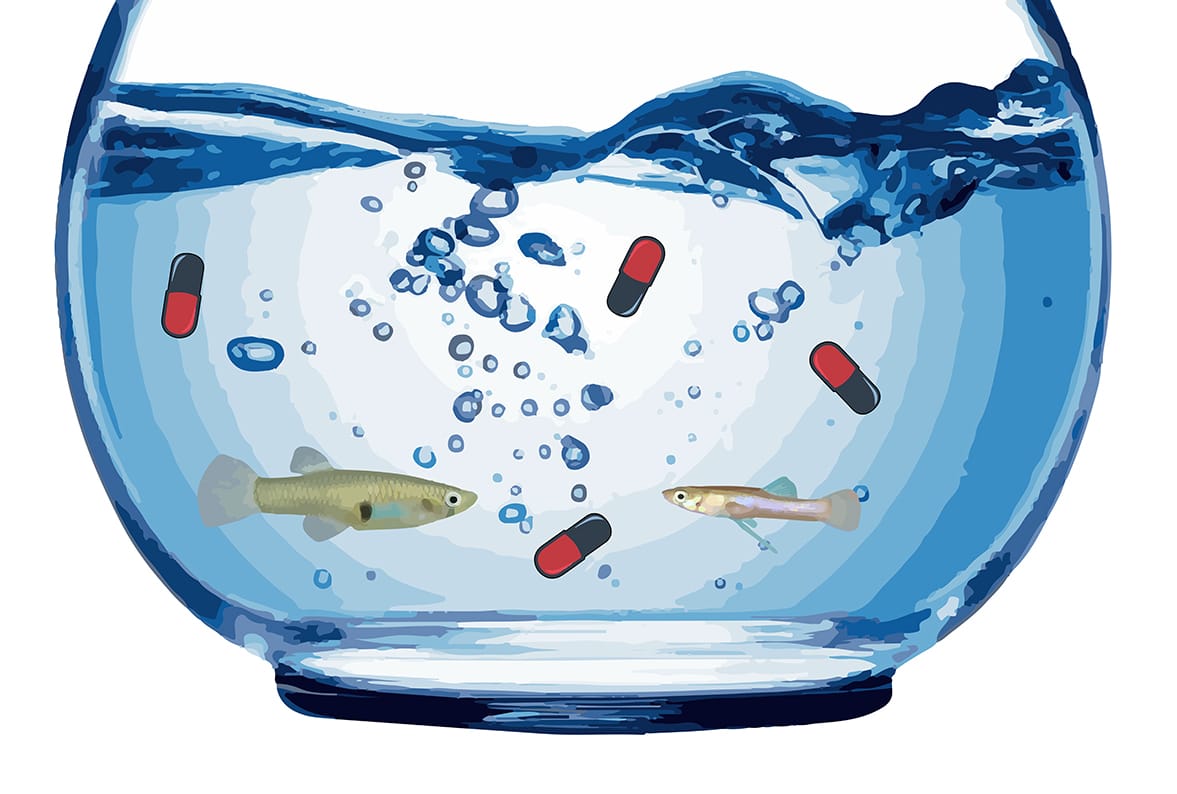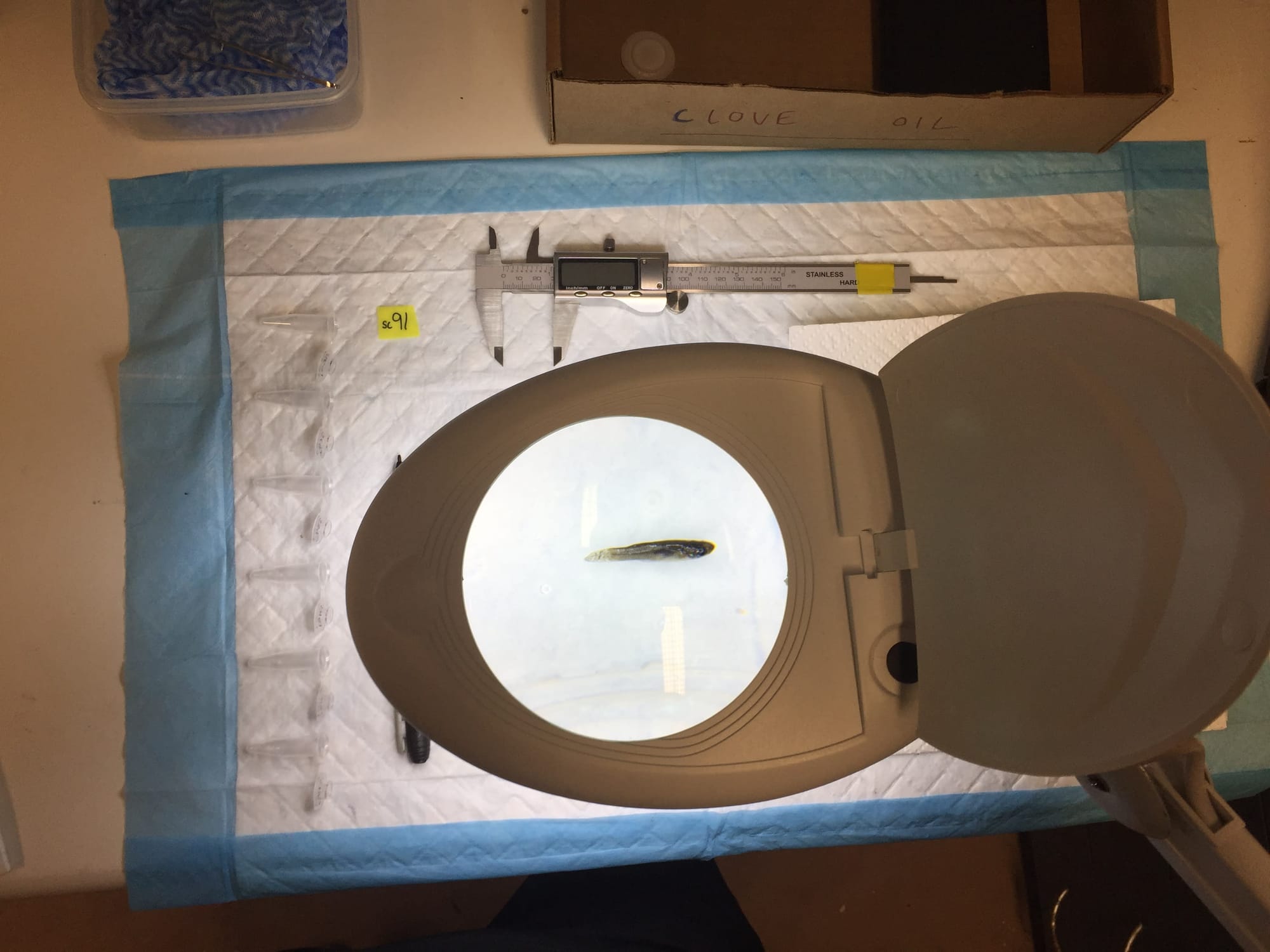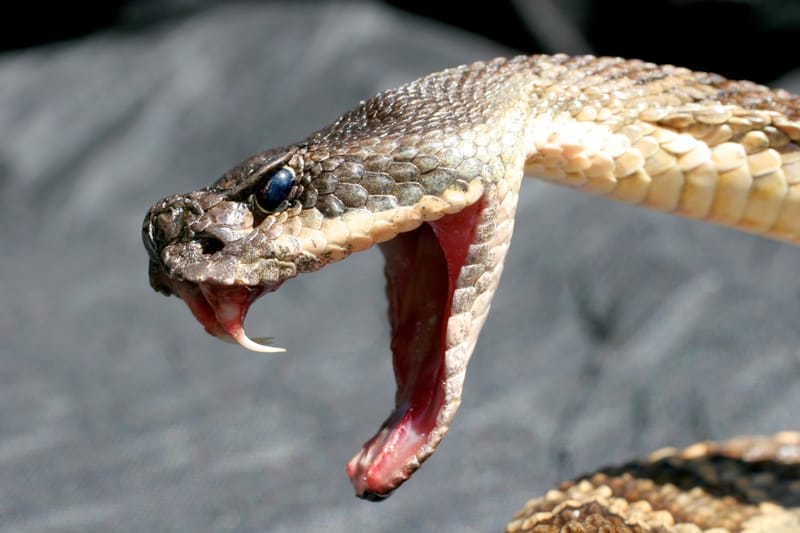
You could call it accidental pollution. It’s when medicines designed for humans find their way into rivers and streams, and are accumulated in insects and their predators.
In world-first research, freshwater ecologist Dr Erinn Richmond and colleagues detected dozens of pharmaceutical compounds in aquatic insects living in Victorian creeks. She also found that the chemicals can then move further up the food chain. The effects on native animals that are likely consuming these drugs are unknown.
The results have now been published in Nature Communications. Dr Richmond and her team tested aquatic insects in six outer-Melbourne creeks for a range of 98 pharmaceuticals – the widest sample tested to date. She also tested riparian spiders that feed on the insects, to see whether the compounds – including anti-depressants, painkillers and blood-pressure medicine – were travelling through the food web.
Her research showed that pharmaceutical traces could be found in the insects, and were transferred to the spiders. This means predators further up the food web – platypuses, frogs, birds, bats and brown trout – are potentially also exposed to alarmingly high levels of drugs.
“Our preliminary estimates suggest that platypus and brown trout, representatives of animals at the top of stream food webs, could in principle be exposed to certain drugs in their diets at levels comparable (up to 50 per cent) to prescribed human doses,” the paper states. Platypuses feed on the insect larvae that live on the creek bed.
“When we take a pharmaceutical, all of the drug is not always used within our system, so we do excrete some, by urine typically, that does end up in wastewater treatment facilities,” Dr Richmond says. “Or if you’re connected to septic, it ends up in a septic tank. And with ageing infrastructure, the tanks aren’t necessarily perfect; there’s some leakage, and we believe that’s a pathway of exposure into the streams.”
Our wastewater plants weren’t designed to filter out these compounds, and our ability to detect them is also imperfect. Dr Richmond sent the water and insect specimens to a laboratory at Sweden’s Umea University for analysis. Although the tests are the most sophisticated available, they only have the capacity to find a fraction of the pharmaceuticals on the market.
Most polluted, least polluted
The insect samples came from six outer-eastern Melbourne creeks. The most polluted was Brushy Creek in Chirnside Park, downstream from a wastewater treatment plant; the most pristine was Lyrebird Creek in the Dandenong Ranges National Park. She also tested Mullum Mullum Creek in Donvale; Scotchman’s Creek near the Monash Clayton campus; Ferny Creek; and Sassafras Creek.
“We did expect that downstream of the wastewater treatment plants that we would see the highest levels of pharmaceutical contamination, but we presumed the national park would be relatively pristine,” she says. Drugs were found in Lyrebird Creek in low concentrations. “We’re talking about 10 nanograms per gram of insect versus something like 75,000 nanograms per gram of insect that we observed in Brushy Creek.”
Traces of 69 pharmaceuticals were detected altogether, out of the 98 that can be tested at the Umea facilities.
The most commonly detected pharmaceuticals in the insect larvae tested were memantine (a treatment for Parkinson’s); codeine; fluconazole (an anti-fungal medicine); metoprolol (high-blood pressure and angina); and mianserin, an anti-depressant.
The testing showed the pharmaceutical compounds were passed up the food chain to the spiders. “Our findings complement other research demonstrating that non-aquatic animals may be exposed to drugs originating from aquatic ecosystems,” the paper says.
The research is “a potential underestimate of what is out there, because we know there are thousands of different drugs available on the market”, Dr Richmond says. “Drugs interact with each other, too. So they can combine to have a greater effect, or they can cancel each other out. We’re not sure yet. We’re yet to explore those different interactions.”
Globally, more than 600 pharmaceutical substances have now been detected in the environment, spanning all continents. And pharmaceutical use is rising as the population grows and ages.
The effect on fish of pharmaceuticals such as anti-depressants and steroids is the focus of the Monash Behavioural Ecology Research Group, headed by Associate Professor Bob Wong.
For his PhD research, Jake Martin exposed eastern mosquito fish, which are widely distributed in Australia, to “ecologically relevant” concentrations of fluoxetine – the active ingredient of the anti-depressant Prozac. He wanted to see how the compound would affect anxiety-related behaviour in the fish, and also their reproductive habits – humans take Prozac for anxiety, and it can be known to repress libido.
“Males are very intent on trying to mate with the females, with the male usually trying to surreptitiously inseminate her using his gonopodium. This is what is called sneak fertilisation.”
Martin tested the “boldness” of the fish by assessing their behaviour in a maze after exposing them to fluoxetine for 35 days. He found that their willingness to explore, and ability to navigate the maze, was unaffected, but that the males became more sexually aggressive after exposure to the drug.
Male mosquito fish impregnate females by means of their gonopodium, a modified fin that delivers sperm. “Males are very intent on trying to mate with the females, with the male usually trying to surreptitiously inseminate her using his gonopodium,” Associate Professor Wong explains. “This is what is called sneak fertilisation.”
Fluoxetine-exposed male fish were more intent on copulating with females, Martin found. “So if we see an increase in sneaking attempts from males, that might not be such good news for the females,” he says. The females are experiencing more sexual harassment, “and this might impinge on other behaviours, like foraging and anti-predator behaviours, if they’re spending all of their time avoiding copulation attempts from males”.

In a separate experiment, a different cohort of fluoxetine-exposed fish was placed in a tank with a caged predator – dragonfly larvae, which Martin says is scarier than it sounds. “Imagine the movie Alien, and those little mouth parts that shoot out – that’s what dragonfly larvae have,” he explains. “They wait for prey to come past. When they do, they shoot these mouth parts out, grab them and pull them in.”
After such a threat, a mosquito fish would be expected to stay out of the danger zone. But the fluoxetine-exposed fish swam about freely.
Martin then tested the behaviour of fish after a simulated bird strike using a “fear poker” – a rod dropped into a tank that contained a fish. He found that in contrast to unexposed fish, those that had been exposed to fluoxetine spent less time “freezing” to avoid detection.
The Behavioural Ecology Research Group is now conducting a world-first multi-generational experiment, looking at how fluoxetine might affect guppy behaviour over an extended period. “We want to see whether these chemicals might shape the course of evolution itself by affecting things like the colours of the males, or the courtship displays, or the quality of the babies,” Associate Professor Wong says.
Some of the fish will be returned to fresh water to see how long it takes them to recover. “If you get rid of pollutants in the water, are there long-lasting effects?” Associate Professor Wong asks. In mice, for instance, researchers have found that female mate choice was influenced by their exposure to the contraceptive pill – even when it occurred three generations previously.
Disruptive steroid
Like the contraceptive pill, the steroid trenbolone disrupts the endocrine system. It’s administered to cattle to build muscle mass, then enters the waterways via agricultural runoff. Trenbolone has been banned in Russia and the EU, but is still in use in Australia, where it’s given to about 40 per cent of livestock.
“Trenbolone has a long half-life of about 260 days,” Associate Professor Wong says. “It has some very unusual chemical properties. During the daytime, UV light breaks the chemical compound down. But at night it reforms again, so scientists have called it a vampire steroid.”
Male guppies exposed to “ecologically relevant” amounts of trenbolone bulked up, increased their sneaking behaviour when mating, and preferred larger females. Females exposed to trenbolone were less sexually responsive and less discerning than unexposed females.
Dr Richmond says she hopes to collaborate with Associate Professor Wong in the future, to look more deeply at how pharmaceutical pollution is affecting the fauna in rivers and streams.
“The drugs we take have a targeted physiological response on humans – that’s why we take them,” said Associate Professor Michael Grace, director of the Water Studies Centre at the Monash School of Chemistry, and a co-author of Dr Richmond’s paper. “It’s now compelling to find out what effects the pharmaceuticals we take are having on these non-target organisms.”





